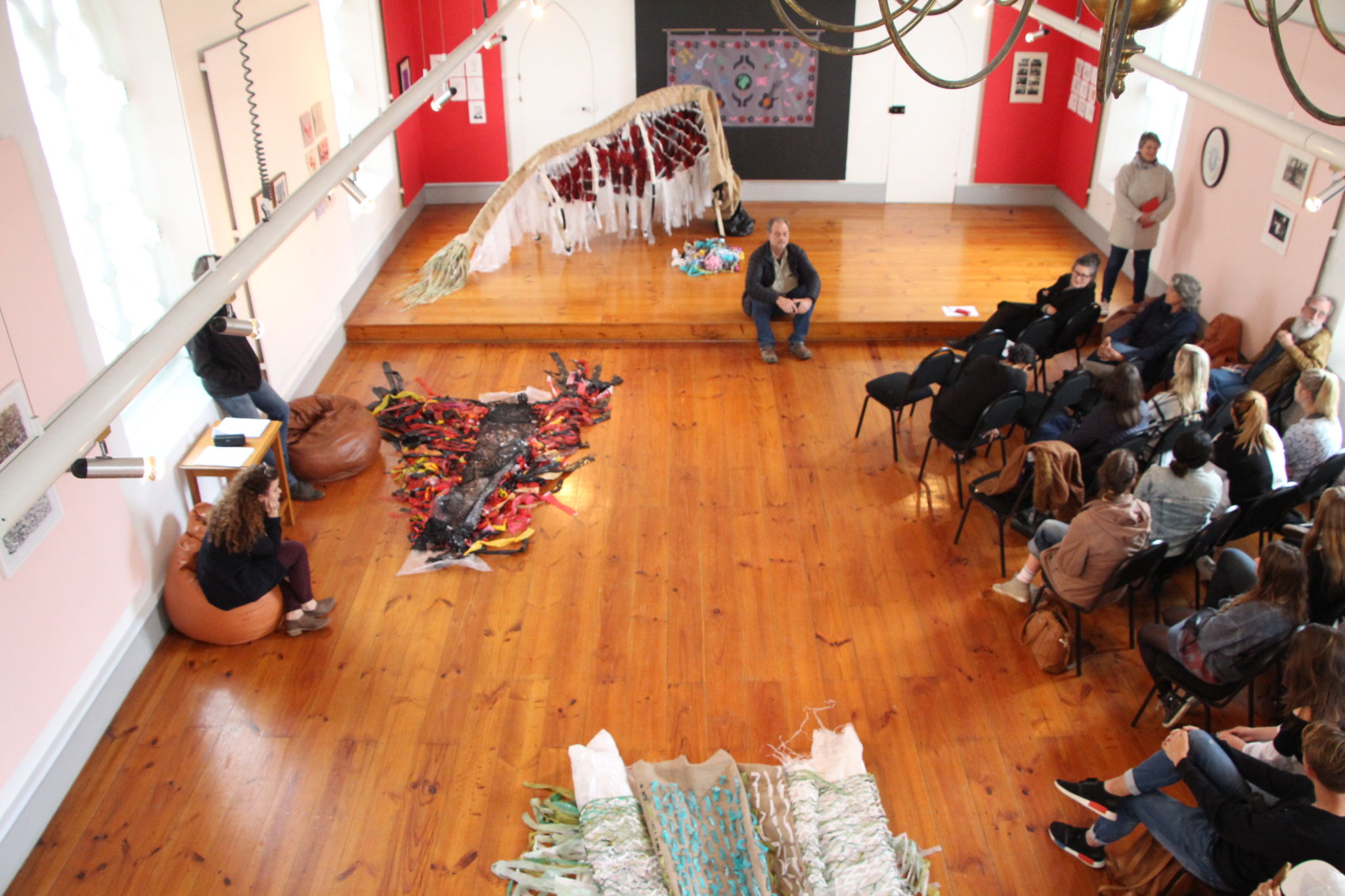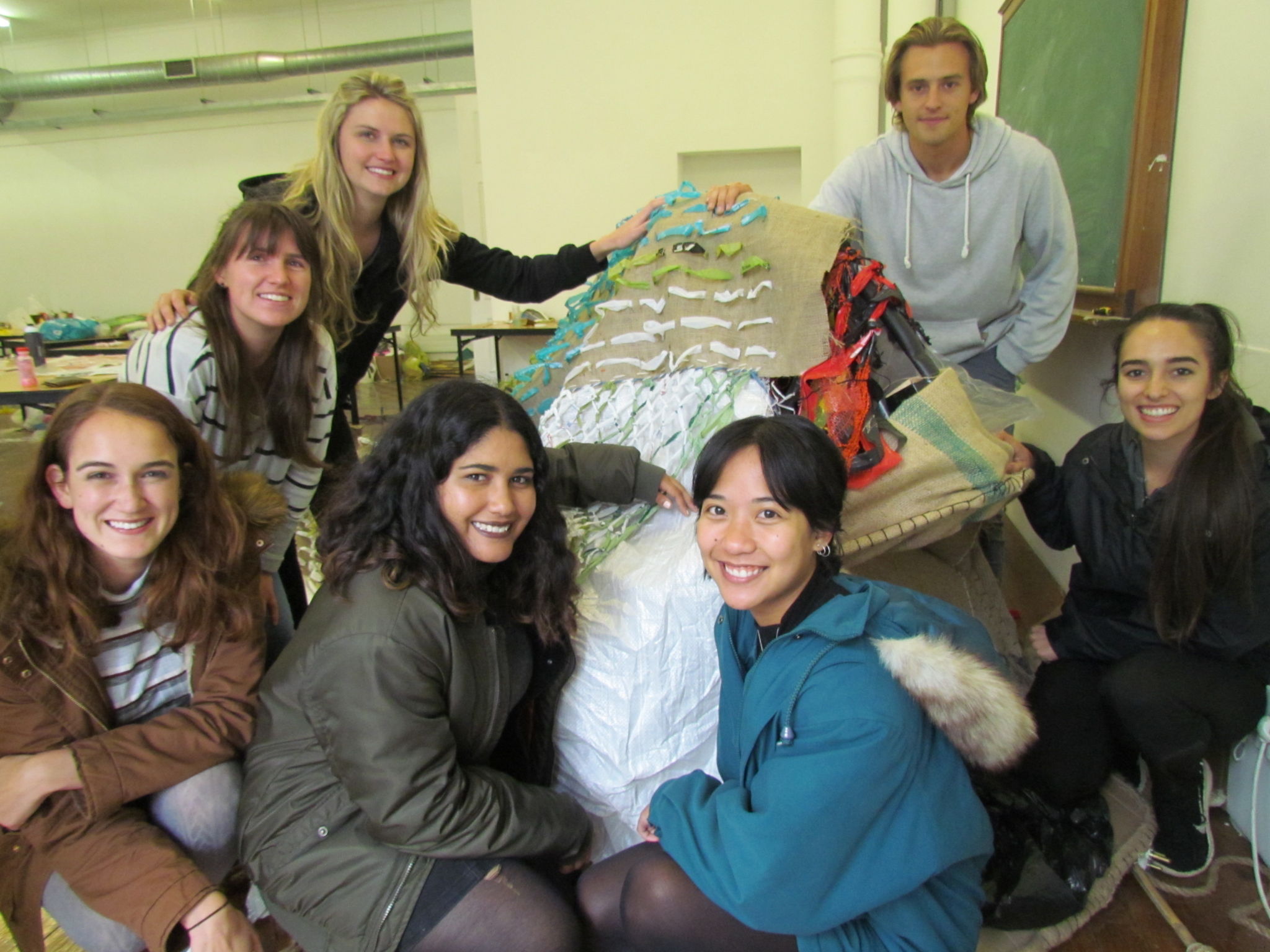Visual communication design students from Stellenbosch University (SU) exhibited their interpretation of a river in distress with a four meter long ‘river puppet’ at the GUS (Gallery University of Stellenbosch) on Thursday 19 October 2017. The exhibit is based on Dr Charon Büchner-Marais’ doctoral research about the role that a natural object such as a river could play in changing governance approaches of the commons, ultimately reconnecting the community and its river.
Hosted by SU’s Centre for Complex Systems in Transition and GUS, the aim of the event is to open creative spaces where these type of discussions can take place, giving a voice to the river. Dr Marais says the Eerste River is an integral part of the town’s history and heritage: “But because of pollution and neglect it is also a source of frustration and embarrassment, impacting on people’s livelihoods further downstream. This exhibit and conversation will be the first in a series of interventions to repair and transform the community’s relationship with the Eerste River,” she explains.

Dr Marais is a CST Research Associate, and she worked with the third-year class of graphic arts students at SU to produce a number of stop-frame videos and a puppet model to produce visual elements that can act as agents of change. The hippopotamus scale puppet they created is aptly named ‘monster’, made from materials collected from the Eerste River and gives a strong metaphorical message of what the river goes through when absorbing all the waste and rubbish from humans, industry and farms.

To read more about this in the latest Matieland, please visit http://publications.virtualpaper.com/stellenbosch_University/Matieland_English/2017110201/#58/

